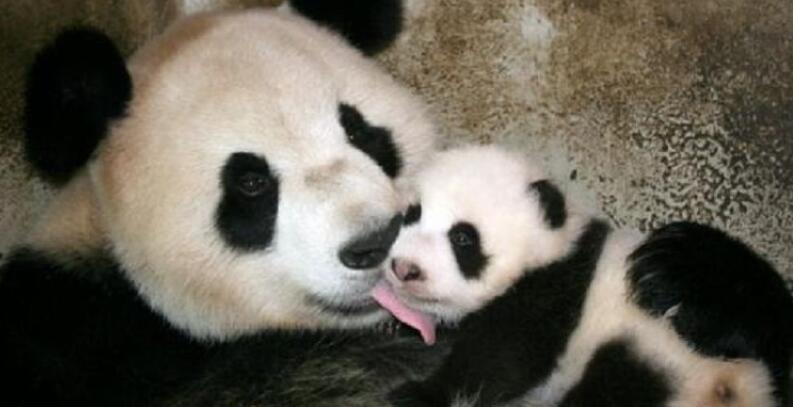There are a number of repatriated giant pandas both at the Chengdu Research Base of Giant Panda Breeding and the China Conservation and Research Center for Giant Panda in Wolong. Each was born overseas,but returned to China at two years of age according to official agreements.
Overseas pandas and other captive wildlife or animals are trained in positive reinforcement, which increases the bond between the panda, its keeper,and the veterinarians. Ten years ago, the Chengdu Panda Base sent a group of panda keepers to Visit Hong Kong Ocean Park for a workshop. After the tour, based on practical situations at the Chengdu Panda Base, they gradually figured out a series of working skills to build mutual trust with pandas and teach them to be more sensible and cooperative while working. Learning from animal behavior experts provided the basis for keepers to initiate positive reinforcement training.
Qi Zhen and QiYuan are two of the first group of pandas to be trained using the new techniques. Qi Zhen is very clever and has a good memory. She is the top student among her classmates. Currently all pandas receive positive reinforcement training when they are young.
Prior to the training, pandas had to be placed under anesthesia to conduct routine blood draws
and other common veterinary procedures. As soon as they saw the veterinarians approaching, the pandas became instantly stressed and fearful, running away as quickly as possible.
After the training, when veterinarians require blood to be drawn, anesthesia is not required, and
the pandas willingly cooperate with the veterinarians by stretching out their limbs for their blood to be drawn or blood pressure to be taken.
The basic tools of training are a target suck,a whistle and as a reward for the panda, a plate of
chopped apple.
First the staff passes the target suck through the bars to the panda. Similar to clicker training in dogs and cats positive reinforcement is utilized through a whistle for commands, and a reward for the correct action. Keepers utilize a Stick to show the pandas the right movements. The panda learns various actions, and for every correct action their reward is a small bit of their favorite snack, a little piece of apple.The key point to this training method is to reward every progress the panda makes. If he or she follows commands the reward is given at that time. Over time and repetitive training, the panda learns how to willingly spread their aims for health checks when asked.
Pandas Feel the pain of injections, just like humans.They are taught through the process of habituation and are conditioned to not fear needles. Pandas are first touched with a syringe without the needle attached, and over time and repetition they learn to no longer react with fear or aggression.Eventually when it is time for a health check or blood draw ,they are genuinely excited and perform the movements they have been trained to do in anticipation of the apple reward.Thus, Physical examinations are no longer a stressful event.
Being a mother of any species is difficult and a lot of hard work. Panda mothers nursing cubs around the clock have less time to spend on eating and sleeping,leading to an extended postpartum period that can delay future breeding.
In the process of discovering the secrets of giant panda breeding, researchers at the Chengdu Panda Base once used a now discontinued method that involved formula feeding when the cubs reached six months of age. 711is allowed the mothers to breed again more quickly, thus increasing the numbers of the endangered species. Typically in the wild, a panda cub stays with its mother for one and a half to two years. Any baby weaned at six months can be healthy in immunity and nutrition under modem science and technology but its survival skills and mental development could be potentially diminished. Besides the caring and love given by panda keepers, some panda nurses are selected from former panda mothers and play both the role of mother and teacher.
Those panda nurses are selected from two kinds of pandas: one is a mother that lacks nursing experience, and the other is a mother highly experienced in cub nursing. For the former, it is a great opportunity for her to practice and pin experiences so that she can be a skilled mother in the future.Whereas the latter’s experiences provides them with the patience and skill-sets to handle and teach the cubs.
This fall, 13 year-old Qing He is the panda nurse for Sunshine Nursery House. Along with her own cub, she assists Jiao Zi and Xing Rong with caring for their two cubs.She teaches the three cubs how to peel the bamboo shoots,eat the bamboo leaves, different social actions and behaviors while affirming positive results through humming vocalizations. She constantly observes the cubs, and if a cub climbs too high up on a tree, she will retrieve it, even if this happens on a consistent basis. Doing such an excellent job in this role, Qing He provides the other two panda mothers with some much-needed postpartum recovery time.
On March 24 of this year, the First Lady of the United States Michelle Obama visited the Chengdu Panda Base and was welcomed by six panda cubs bore last year and Ya Ya, the well-known 21 year-old grandmother. Ya Ya has birthed 13 cubs in 9 different litters and is remarkably patient while teaching new cubs survival skills. As a result she is affectionately termed leader of Children”.
To let the panda mothers fulfill the role of nurses for other panda mothers is an important aspect of the work at the Chengdu Panda Base.






















































































